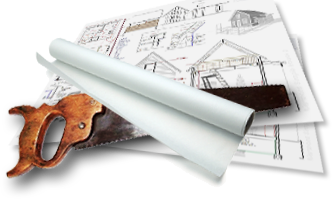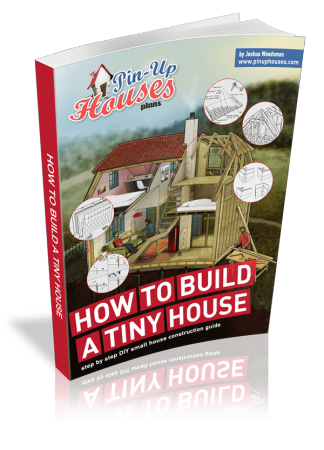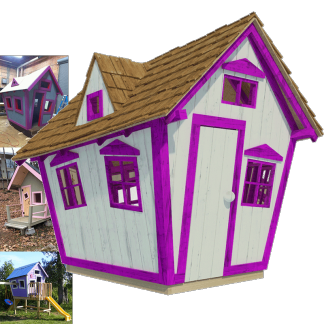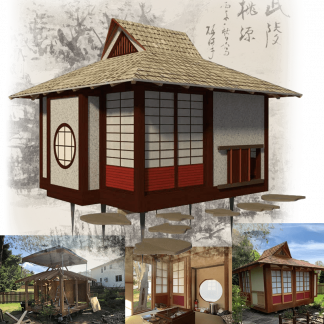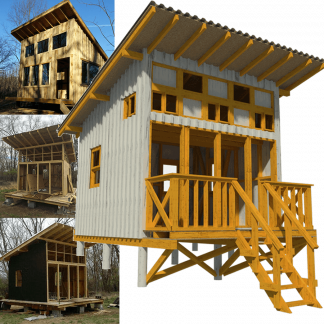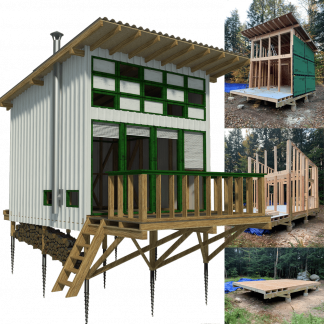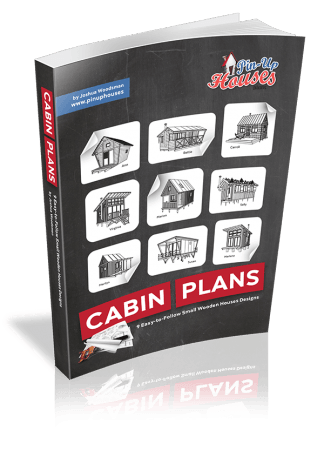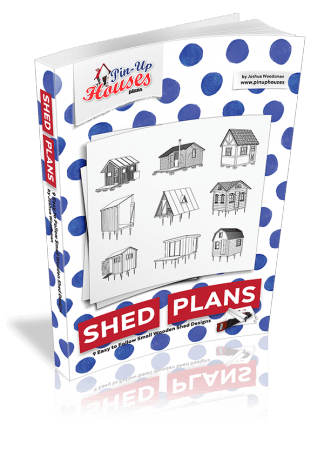Oh my gosh, can we talk about tiny houses for a minute?! I am absolutely obsessed with this movement, and honestly, after seeing so many friends make the transition from their big traditional homes to adorable tiny spaces, I’m convinced this might be the lifestyle revolution we’ve all been waiting for.
The tiny house movement isn’t just about downsizing—it’s about upsizing your life! Think about it: less cleaning, lower bills, more freedom, and the ability to focus on experiences rather than stuff. But let’s be real here—making the leap from a conventional 2,000+ square foot home to a 400 square foot tiny house is HUGE (pun totally intended), and there are some serious logistics to figure out.
If you’ve been scrolling through tiny house Instagram accounts at 2 AM like I have, dreaming about that minimalist lifestyle and wondering “could I actually do this?”, then this guide is totally for you! Let’s dive into everything you need to know about making this exciting transition happen.
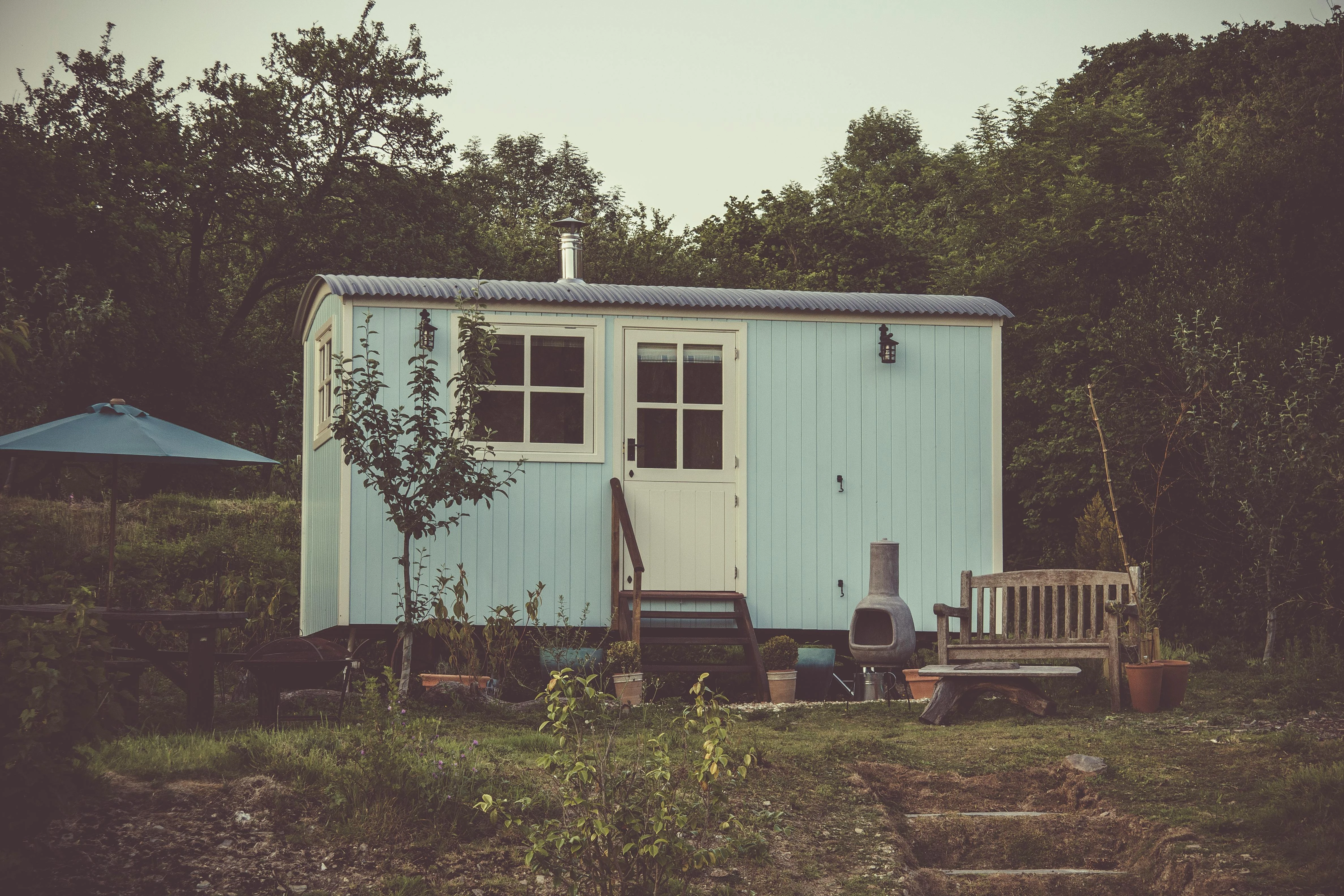
Why Everyone’s Going Crazy for Tiny Houses
Okay, so tiny houses aren’t exactly new, but the movement has absolutely exploded in recent years, and for good reason! I mean, who doesn’t want to cut their living expenses in half while gaining complete location freedom? The average tiny house costs between $50,000-$120,000 compared to the median home price of over $400,000. That’s life-changing money we’re talking about!
Financial Freedom That’ll Blow Your Mind
Here’s what gets me so excited about this: imagine having NO mortgage payment. Zero. Zilch. Instead of spending 30% of your income on housing, you could be investing that money, traveling, starting a business, or just sleeping better at night knowing you’re not drowning in debt.
The utility savings alone are incredible—we’re talking $20-50 monthly electric bills instead of $200+. Water, heating, cooling, insurance, property taxes—everything shrinks when your house shrinks. One friend told me her total monthly expenses dropped from $3,200 to under $800. I literally got chills when she told me that!
Environmental Impact That Actually Matters
If you’re someone who cares about your carbon footprint (and honestly, who isn’t these days?), tiny houses are like the ultimate environmental statement. The average tiny house uses 68% less energy than a traditional home. That’s not just good for the planet—it’s good for your conscience and your wallet!
Plus, many tiny house owners go completely off-grid with solar panels and composting toilets. Talk about living your values! You’re literally walking the walk while everyone else is just talking about sustainability.
The Great Purge: Decluttering Like a Boss
Alright, let’s talk about the elephant in the room—getting rid of 80% of your stuff. I won’t lie to you, this part can be emotional. I’ve seen grown adults cry over kitchen gadgets they haven’t used in five years. But here’s the thing: once you get through the initial shock, it’s actually incredibly liberating!
The 90-Day Decluttering Challenge
Start three months before your planned transition. Seriously, don’t try to do this in a week—you’ll burn out and probably end up keeping things you don’t need just because you’re overwhelmed.
Week 1-2: Take photos of EVERYTHING. I mean everything. This helps you process what you actually own (spoiler alert: it’s probably way more than you think) and makes decisions easier when you’re not staring at the actual items.
Week 3-6: Start with the easy stuff—clothes you never wear, books you’ll never read again, kitchen gadgets that seemed like a good idea at the time. Be ruthless! If you haven’t used it in a year, it goes.
Week 7-10: Now we get into the harder categories—sentimental items, “just in case” items, and things that were expensive but you don’t actually use. This is where that photo inventory comes in handy!
Week 11-12: Final sweep and organizing what’s left into “definitely keeping,” “maybe,” and “absolutely not” piles.
Selling Strategies That Actually Work
Don’t just donate everything! You can fund your tiny house transition by selling your stuff strategically:
- High-end furniture and appliances: Facebook Marketplace, Craigslist
- Electronics: eBay, Amazon trade-ins, local electronics stores
- Clothes: Poshmark, ThredUp, local consignment shops
- Books: Amazon, Half Price Books, local bookstores
- Everything else: Estate sale company if you have enough stuff
I know people who made $15,000-25,000 just from selling their excess belongings. That’s serious tiny house money right there!
Designing Your Dream Tiny Space
This is where it gets FUN! Designing a tiny house is like solving the world’s most awesome puzzle. Every single inch matters, and the creative solutions people come up with are absolutely mind-blowing.
Multi-Functional Everything
Forget single-use items—everything in your tiny house needs to pull double or triple duty. We’re talking dining tables that fold into walls, stairs that are also storage drawers, beds that transform into sofas, and kitchen islands on wheels.
My favorite tiny house feature? A bathroom mirror that’s also a medicine cabinet AND a window to the loft bedroom. Like, how clever is that?! The ingenuity in these spaces seriously inspires me every single day.
Storage Solutions That’ll Make You Swoon
Tiny house dwellers are basically storage ninjas. Under-stair storage, ceiling-mounted nets for lightweight items, magnetic strips everywhere, and furniture that opens up to reveal hidden compartments. It’s like living in a real-life transformer!
The key is thinking vertically—use every inch of wall space up to the ceiling. I’ve seen tiny houses with 30+ storage solutions in a 300 square foot space. It’s incredible what’s possible when you get creative!
Finding Your Perfect Tiny House
Now for the exciting part—actually getting your tiny house! You’ve got several options here, and honestly, each one has its own advantages depending on your budget, timeline, and DIY skills.
Buying vs Building: The Great Debate
Pre-built tiny houses typically run $80,000-150,000 for a high-quality, move-in ready home. It’s more expensive upfront, but you get professional construction and can move in immediately.
DIY building can cost $50,000-80,000 if you do most of the work yourself, but expect to spend 1-2 years on construction. I have friends who LOVED the building process and others who nearly divorced over it (true story!), so know yourself before you commit to this route.
There’s also a middle option—buying a shell and finishing the interior yourself. This can save money while avoiding the super technical stuff like electrical and plumbing.
Where to Park This Beauty
Okay, this is probably the trickiest part of tiny house living, but it’s totally manageable with some research! You’ve got options:
- RV parks (many now welcome tiny houses)
- Private land rental (check Craigslist, Facebook groups)
- Tiny house communities (these are popping up everywhere!)
- Friend’s/family’s property (if you’re lucky!)
- Some progressive cities allow ADUs (accessory dwelling units)
The tiny house community is super supportive about sharing parking resources. Join Facebook groups for your area—people are always posting about available spots!
The Money Part: Funding Your Tiny Dream
Let’s talk dollars and cents because this transition requires some financial planning, but the good news is you probably have more resources than you think!
Liquidating Your Current Home
Here’s where timing becomes super important. Most people need to sell their traditional home to fund their tiny house purchase, but the timing can be tricky. You don’t want to be homeless between houses, but you also don’t want to carry two housing payments.
This is where cash sales can be a total game-changer! Traditional home sales can take 3-6 months, but cash buyers can close in 2-4 weeks. That timeline flexibility can make your transition so much smoother.
I was just talking to someone in Florida who was making this exact transition, and they found that working with local cash buyers made everything possible. They were able to get a fair price for their traditional home and close quickly enough to coordinate with their tiny house delivery. In markets like Tampa Bay, there are actually quite a few companies that specialize in these fast sales, and Clearwater florida home buyers helped them close in just three weeks, which was perfect timing for their tiny house transition.
Alternative Financing Options
Since tiny houses on wheels are typically classified as RVs rather than real estate, traditional mortgages usually aren’t an option. But don’t panic! You’ve got alternatives:
- Personal loans (if you have good credit)
- RV loans (lower rates than personal loans)
- Builder financing (some tiny house companies offer this)
- Cash from your home sale (the dream scenario!)
Legal Stuff You Need to Know
Okay, this part isn’t as fun as picking out cute tiny house decor, but it’s super important! The legal landscape for tiny houses is still evolving, and it varies wildly by location.
Zoning and Building Codes
Some areas are totally tiny-house friendly (looking at you, Austin and Portland!), while others have minimum square footage requirements that exclude tiny houses. Do your research BEFORE you buy!
Many tiny house owners register their homes as RVs to avoid residential building code issues. It’s not perfect, but it works in many situations.
Insurance Considerations
RV insurance typically covers tiny houses on wheels, and it’s way cheaper than homeowner’s insurance. We’re talking $300-800 annually versus $1,200+ for traditional home insurance.
Making the Mental Transition
Here’s something nobody talks about enough—the psychological adjustment to tiny living is real! Going from a big house to a tiny one isn’t just about physical space; it’s about completely changing how you think about home and possessions.
Embracing Minimalism (For Real This Time)
Remember all those minimalism challenges you started but never finished? Well, tiny house living is minimalism on steroids, and honestly, it’s amazing once you adjust. You’ll find yourself asking “do I really need this?” about EVERYTHING, and usually the answer is no.
The mental clarity that comes from owning less stuff is incredible. Decision fatigue decreases, cleaning becomes a 20-minute task, and you spend way more time living your life instead of managing your stuff.
Community and Connection
One of the coolest things about tiny house living is the community aspect. Tiny house owners are some of the most welcoming, helpful people you’ll ever meet. There are meetups, festivals, online communities, and so much support for this lifestyle.
Plus, when your house is mobile, visiting friends becomes way more meaningful. You can literally bring your home to them!
Seasonal Living and Location Freedom
This is where tiny house living gets REALLY exciting! Imagine following perfect weather year-round, spending winters in Florida and summers in Colorado. That’s not just a dream—it’s what many tiny house owners actually do!
The Snowbird Lifestyle on Steroids
Traditional snowbirds spend tons of money maintaining two homes. Tiny house owners just move their one home wherever the weather (or their mood) takes them. Beach in winter, mountains in summer, desert in spring—it’s all possible!
Work-From-Anywhere Reality
With remote work becoming more common, the location independence that tiny houses provide is incredibly valuable. You can live anywhere with internet access, which opens up amazing possibilities for cheaper living and better quality of life.
Common Challenges (And How to Solve Them)
Let’s be honest—tiny house living isn’t all sunshine and Instagram-worthy interiors. There are real challenges, but they’re totally manageable if you’re prepared!
Storage and Organization
This never stops being a consideration. You have to be intentional about every single item you bring into your space. The good news? You become incredibly good at organization, and your space stays clean because there’s literally nowhere for clutter to hide!
Privacy and Personal Space
If you’re living with a partner or family, personal space becomes precious. Successful tiny house families create systems for alone time—outdoor spaces, scheduled alone time in the loft, even just headphones and a good book.
Weather Considerations
Tiny houses can be more sensitive to extreme weather than traditional homes. Proper insulation, ventilation, and heating/cooling systems are crucial. Many owners also have backup plans for severe weather events.
The Tiny House Lifestyle Revolution
What I love most about this movement is that it’s not just about smaller houses—it’s about bigger lives! When you’re not spending all your time and money maintaining a huge house full of stuff you don’t need, you have resources for experiences, relationships, and personal growth.
Environmental Impact That Matters
Every tiny house built is a statement that we don’t need massive homes to be happy. The environmental benefits are huge—less material consumption, lower energy use, smaller carbon footprints.
Economic Freedom That’s Real
The financial freedom aspect cannot be overstated. When housing costs drop from $2,500+ monthly to under $500, everything changes. People are starting businesses, traveling the world, retiring early, and pursuing passions instead of just paying bills.
Building Your Tiny House Community
One of the most surprising benefits of tiny house living is the instant community you join. Tiny house owners help each other find parking, share resources, and support each other through the challenges of alternative living.
Online Resources That’ll Save Your Sanity
Facebook groups for tiny house living are incredibly active and helpful. Whether you need parking recommendations, design ideas, or just moral support, the community is there for you.
YouTube channels like “Living Big In A Tiny House” and “Tiny House Nation” provide endless inspiration and practical advice. I’ve spent hours watching tours and getting ideas!
Real-World Meetups and Events
Tiny house festivals happen all over the country, and they’re amazing for seeing different designs, meeting builders, and connecting with other people considering this lifestyle. Plus, they’re just plain fun!
Making It Happen: Your Action Plan
Okay, so you’re convinced (how could you not be?!), but where do you actually start? Here’s your step-by-step action plan for making this dream a reality:
Months 1-3: Research and Planning
- Visit tiny houses in person (festivals, Airbnb stays, tours)
- Research legal requirements in your target areas
- Start decluttering and selling stuff
- Join online communities and start networking
Months 4-6: Financial Preparation
- Get pre-approved for financing or start saving cash
- List your current home (or start preparing to)
- Finalize your tiny house design and find builders/models
Months 7-12: Making It Real
- Order/build your tiny house
- Secure parking arrangements
- Complete decluttering process
- Handle all the legal paperwork
Month 12+: Living the Dream!
- Move into your tiny house
- Adjust and optimize your systems
- Share your journey and help others make the transition
The Bottom Line: Is Tiny House Living Right for You?
Here’s the truth—tiny house living isn’t for everyone, and that’s totally okay! It requires flexibility, creativity, and a willingness to prioritize experiences over possessions. But for the right people, it’s absolutely life-changing.
If you’re feeling overwhelmed by stuff, stressed about money, or just ready for a simpler way of living, this could be exactly what you need. The financial freedom alone is worth considering, but add in the environmental benefits, the community, and the adventure of it all, and it becomes pretty compelling.
The best part? You don’t have to commit forever. Many people try tiny house living for a few years and then transition to something else, but they take the lessons about minimalism, intentional living, and financial wisdom with them wherever they go.
Whatever you decide, remember that your home should support the life you want to live, not the other way around. If a tiny house helps you live more authentically, more affordably, and more adventurously, then maybe it’s time to think small and live big!
Are you ready to make the jump? The tiny house community is waiting for you with open arms (and lots of storage solutions)!

